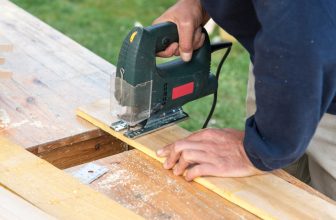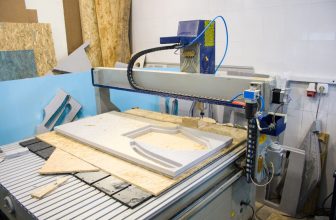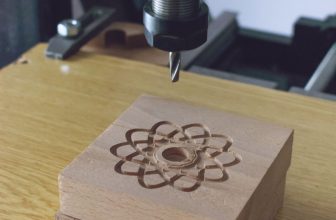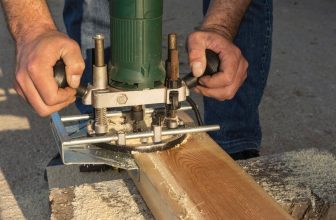A framing nailer is a type of nail gun primarily used for larger DIY and construction projects. Framing nailers are used for tougher and thicker pieces of wood or other materials, such as 2x4s and decking.
They use large 8-gauge nails, typically 16d or 10d (3.5 inches and 3 inches respectively), and have enough power to drive them through thick and hard materials.
One of the main benefits of framing nailers is their speed. While nailing manually is tiring and time-consuming, a framing nailer can drive several nails in the time it would take to hammer a single nail by hand, requiring minimum effort to use.
On the other hand, a finish nailer is a smaller nail gun used for more precise, delicate purposes. They can’t accommodate the larger nails required for heavy-duty building materials such as fences and 2x4s, instead using 16- or 15-gauge nails approximately 1-2 inches in length.
Because of their comparatively weaker strength and smaller nail size, finish nailers won’t be able to be used for the same purposes as framing nailers.
Instead, they are most useful for small-scale DIY projects, such as securing baseboards and trims, securing cabinets, and even building furniture.
The main differences between framing and finish nailers are their purposes and (as a result) the size and type of nails they use. Both nail guns are handy and effective at their intended purpose, but they won’t be as good if you try to swap them out.
For example, a finish nailer won’t have the strength or the capacity for the large 3.5-inch nails required for heavy-duty construction work. Similarly, a framing nailer won’t have the precision necessary for more delicate jobs such as securing baseboards or window trim.
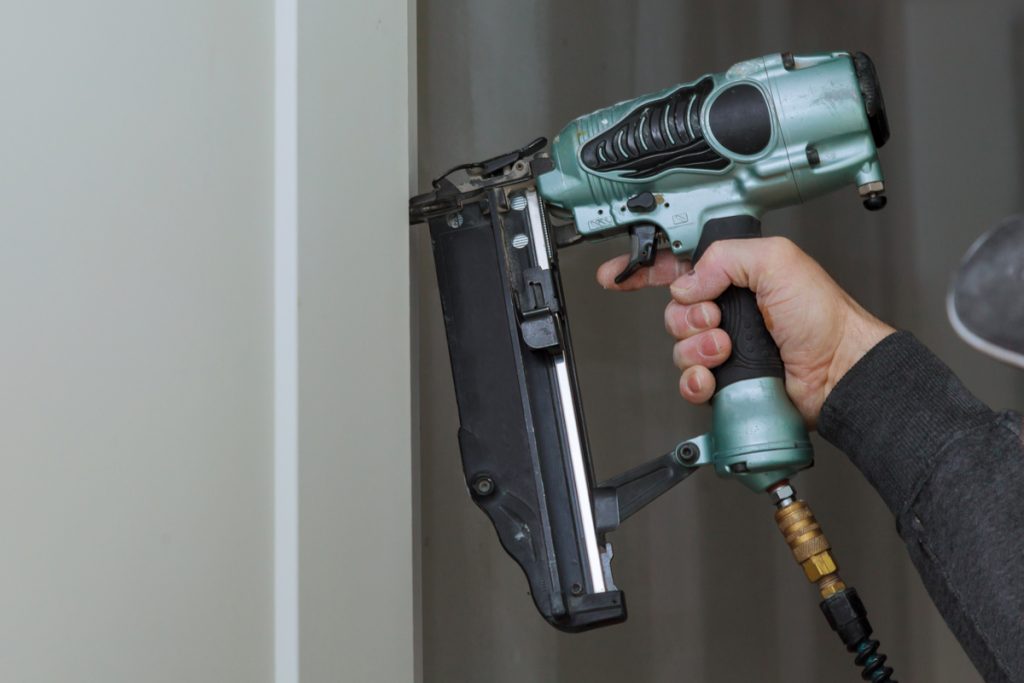
Why Do Framing Nailers Have Different Degrees?
The degree of a framing nailer isn’t the angle at which the nail is driven. Instead, the degree refers to the collation of the nails – the method and angle of how the nails are stored within the nail gun.
Different degrees use different forms of collation, and the degree of a nail gun means it can be used for different purposes.
Framing nailers have different degrees to help them perform better at different functions. Low-degree framing nailers (such as 15-degree nailers) use wire-coil collating to keep them together.
This makes it easier for the framing nailer to access hard-to-reach areas such as tight corners and wall studs. It also means that the nails won’t separate in wet or humid areas, so it is perfect for use outdoors in wet weather.
High-degree framing nailers, typically between 30-34 degrees, are even better at reaching tight spaces at tricky angles. They also tend to do away with wire-collated nails instead of plastic or paper strip collation.
In addition to the extra maneuverability offered by these degrees of framing nailer, the collation makes the nails cheaper to buy and easier to use than wire-coil collated nails.
Can I Use A Framing Nailer For Fence Pickets?
A framing nailer is the ideal type of nail gun for all varieties of fences. Because they use long nails, framing nailers can create secure and durable fences in no time.
Using a framing nailer for fence pickets will significantly reduce the time and effort required to construct a fence manually. With their effectiveness and efficiency at driving nails through more robust building materials, framing nailers get your fence built without spending hours hammering away.
You can theoretically use a finish nailer for fence pickets, but it is ill-advised. The shorter and thinner nails they use are less effective at securing the fence posts and are more prone to snaps and breaks.
Thicker fences won’t be secured at all, as the nails won’t be able to drive all the way through the materials. When building a fence, a framing nailer is the best choice.




